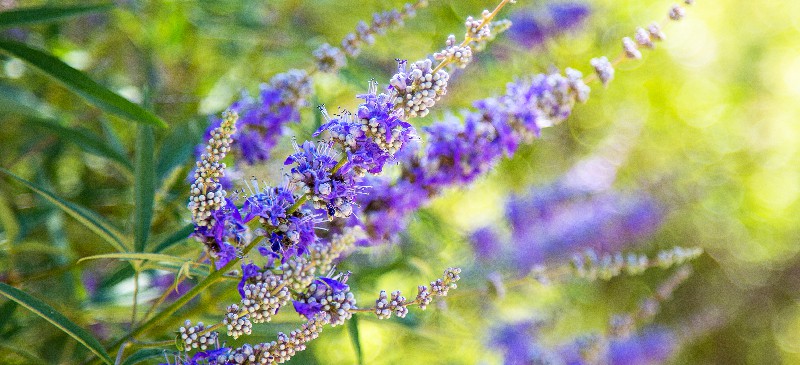This Dr. Axe content is medically reviewed or fact checked to ensure factually accurate information.
With strict editorial sourcing guidelines, we only link to academic research institutions, reputable media sites and, when research is available, medically peer-reviewed studies. Note that the numbers in parentheses (1, 2, etc.) are clickable links to these studies.
The information in our articles is NOT intended to replace a one-on-one relationship with a qualified health care professional and is not intended as medical advice.
This article is based on scientific evidence, written by experts and fact checked by our trained editorial staff. Note that the numbers in parentheses (1, 2, etc.) are clickable links to medically peer-reviewed studies.
Our team includes licensed nutritionists and dietitians, certified health education specialists, as well as certified strength and conditioning specialists, personal trainers and corrective exercise specialists. Our team aims to be not only thorough with its research, but also objective and unbiased.
The information in our articles is NOT intended to replace a one-on-one relationship with a qualified health care professional and is not intended as medical advice.
Vitex or Chasteberry, the Female-Friendly Fruit for PMS
February 26, 2023

Do you suffer from premenstrual syndrome (PMS), irregular periods, infertility or menopause? Vitex, also known as chasteberry, may help. It’s been used for centuries and has proved itself effective time and again in scientific studies.
This small but medicinally potent brown berry about the size of a peppercorn has a long history (over 2,000 years) of use as an herbal medicine.
But vitex is not only for women with hormonal issues that need fixing. It’s recently been shown to exhibit antitumor activities in different human cancer cell lines, and that’s not all. Keep reading to find out all of the incredible health advantages it holds for both women (especially) and men.
What Is Vitex?
Vitex is technically the name for the largest genus in the family Verbenaceae, which comprises 250 species distributed all over the world. The vitex species are deciduous shrubs.
The most common variety of vitex used medicinally is chaste tree, which produces chasteberry (Vitex agnus-catus), a small brown berry fruit about the size of peppercorn. Chastetree is actually a deciduous shrub native to the Mediterranean and Asia and has been naturalized in North America. Chasteberry is frequently called by its Latin names: vitex or agnus-castus. Other names include Abraham’s balm, lilac chastetree and monk’s pepper.
As scientists search for potential biologically active compounds from medicinal plants, 18 compounds have been found in the fruits of Vitex agnus-castus. To date, more than 20 vitex species have been investigated for chemical and biological properties. The results have included the isolation and characterization of approximately 200 compounds, mainly flavonoids, terpenoids, steroids, iridoids and lignans.
Herbs like vitex are natural ways you can strengthen and tone your body’s systems. The medicinal ability of chasteberry to positively affect hormonal health issues appears to be derived from dopaminergic compounds present in the herb. Chasteberry helps the body raise its own levels of progesterone.
Health Benefits
1. Relieves PMS Symptoms
Vitex is one of the most popular herbal remedies for PMS symptoms, including cramps. The symptoms of PMS can greatly be reduced or even eliminated by making an effort to get your hormones in proper balance. Vitex is one of the top herbal recommendations when it comes to natural PMS relief.
In fact, one study published in the Journal of Women’s Health & Gender-Based Medicine found that after being treated with vitex for three menstrual cycles, 93 percent of patients reported a decrease in the number of PMS symptoms or a complete end of PMS complaints. In addition to reducing unwanted premenstrual symptoms, it also treats some menopausal symptoms as well as hormonally induced acne.
For a woman, inappropriately increased production of prolactin may be a factor in cyclic breast tenderness and other PMS symptoms. Vitex is believed to work well at reducing PMS symptoms because it suppresses the release of prolactin from the pituitary gland.
Numerous studies suggest that chasteberry may help reduce symptoms of PMS, including breast tenderness, headache and irritable mood. In one review conducted by the Royal Melbourne Institute of Technology and the University in Australia, five out of six studies found vitex extracts to be superior to a placebo for treating PMS.
2. Reduces Uterine Fibroids
Uterine fibroids are non-cancerous tumors found within the uterine walls, often resulting in a change in the size or shape of the uterus as well as several unpleasant symptoms. A key way to prevent and reduce uterine fibroids is to maintain a proper balance of hormones. Chasteberry can help to balance the ratio of estrogen to progesterone.
3. Improves Female Fertility
Vitex has been shown to improve fertility, particularly for women with luteal phase defect (shortened second half of the menstrual cycle). These women have trouble because their ovaries don’t release enough progesterone.
In one trial, 48 women (ages 23 to 39) who were diagnosed with infertility took chasteberry once daily for three months. During the three-month trial period, seven women became pregnant and 25 women experienced normalized progesterone levels, which can increase the chances for pregnancy.
Another study evaluated 52 women with luteal phase defects due to latent hyperprolactinemia (higher than normal levels of the hormone prolactin in the blood). Each woman received a daily dose of 20 milligrams of Vitex agnus castus preparation or a placebo. The study was aiming to prove if it could reduce the elevated pituitary prolactin and also normalize the deficits in luteal phase length and luteal phase progesterone synthesis.
Results were excellent. After three months, the women treated with vitex had a reduction in prolactin release, shortened luteal phases were normalized and deficits in the luteal progesterone synthesis were eliminated. Two women in the treated group also got pregnant during the course of the study, and no negative side effects of were seen.
These results show chasteberry can be utilized as a natural infertility treatment in women.
4. Clears Up Acne
Hormone imbalances and fluctuations can be a the root of acne, especially if you’re a woman. If you experience monthly outbreaks of acne, especially along your jawline and chin, vitex might be a perfect acne natural remedy.
It can balance your hormones, which can reduce acne formation in women. Preliminary research suggests that it might help clear premenstrual acne, as well, possibly by regulating hormonal influences.
5. Treats Endometriosis
Endometriosis is an often painful disorder in which tissue that normally lines the inside of your uterus grows outside your uterus. It most commonly involves your ovaries, bowels or the tissue lining your pelvis. No one is sure of the exact cause of endometriosis, but some contributing factors include hormonal imbalances and genetics.
You can’t do anything about the genetics factor, but the hormonal imbalance can possibly be overcome with the use of vitex. To naturally treat endometriosis, chasteberry is usually taken long term (12 to 18 months) for maximum effectiveness.
6. Remedies Amenorrhea
Amenorrhea is a medical condition in which a woman of reproductive age has her menstrual cycle stop suddenly. If you’re not pregnant and your period is irregular or has stopped, it’s a solid indication that something isn’t right.
Amenorrhea can be caused by a number of factors with one possibility including having too much prolactin in your body, which can cause hypoestrogenism or estrogen deficiency. Vitex supplementation can help to modulate prolactin and get a healthy balance of estrogen and progesterone back on track.
7. Lowers Menopause Symptoms
Menopause is the permanent end of menstruation and fertility, defined as occurring 12 months after your last menstrual period. It can happen in your 40s or 50s, but the average age is 51 in the U.S. Vitex is often combined with other herbs, such as red clover, black cohosh or dong quai, for maximum benefits. It’s one of the most recommended menopause supplements.
One 2007 study published in Gynecological Endocrinology found that an herbal supplement containing chasteberry provided safe and effective relief of hot flushes and sleep disturbances in pre- and postmenopausal women. Another 2015 study found that a supplement containing vitex as a key ingredient was able to reduce moderate to severe menopause symptoms.
8. Treats Enlarged Prostate
Benign prostatic hyperplasia is an age-associated prostate gland enlargement that can cause urination difficulty. A 2005 study conducted by the Institute of Pharmaceutical Biology at the University of Basel in Switzerland showed that extracts of Vitex agnus-castus fruits can be useful for the prevention and treatment not only of an enlarged prostate, but also prostate cancer. Data showed that vitex contains components that inhibit proliferation and kills prostate cancer cells.
Dosage Recommendations
Vitex or chasteberry is available in many different forms in your local health store or online. The dried, ripe chasteberry is used to prepare liquid extracts or solid extracts that are put into capsules and tablets. You can also find vitex in liquid or tea form, or combined with other herbs that promote hormonal balance. You can also order the dried berries and make your own tincture at home.
Here are the recommended doses for certain uses:
- For PMS: 400 milligrams daily before breakfast
- For uterine fibroids: 400 milligrams twice daily
- For infertility: 160–240 milligrams daily
- For acne: 160 milligrams daily
- For endometriosis: 400 milligrams twice daily
- For menopause: 160–240 milligrams daily
History
In ancient times, vitex was believed to be an anaphrodisiac (the opposite of an aphrodisiac) or something that lowers the libido. It makes sense that chasteberry originally got its name from its ability to counter sexual desire. The Romans used a drink prepared from the plant’s seeds to decrease libido.
In ancient Greece, young women celebrating the festival of Demeter wore chasteberry blossoms to show that they were remaining chaste in honor of the goddess. For monks in the Middle Ages, chasteberry was used for similar purposes, which lead to the common name “monk’s pepper.”
The modern use of vitex began in the 1950s when the German pharmaceutical firm Madaus Co. first produced a standardized chasteberry extract.
In Iranian traditional medicine, vitex leaves and fruits are used for increasing milk production in women. The fruits of Vitex rotundifolia have been used as a folk medicine for the treatment of headache, cold, migraine, eye pain, female hormonal disorders, asthma, chronic bronchitis and gastrointestinal infections, such as diarrhea and bacterial dysentery.
Vitex trifolia has been used as an anti-inflammatory and sedative for headache, rheumatism and for common cold in Asian countries. In China, vitex is even a folk medicine for the treatment of cancers.
Precautions and Side Effects
Vitex supplements are typically safe for most people when taken by mouth in appropriate dosages. Uncommon vitex side effects include upset stomach, nausea, rash, acne, itching, headaches, difficulty sleeping and weight gain. When some women begin taking vitex, they notice a change in menstrual flow.
If you’re pregnant, have a hormone-sensitive health condition — such as endometriosis or breast cancer — or if you have a history of mental illness or Parkinson’s disease, then talk to your doctor before taking vitex in any form.
Vitex can interfere with some medications, including birth control, antipsychotics and estrogen supplements like those used with in-vitro fertilization treatments. Speak with your doctor before trying vitex if you are taking any of these medications.
Final Thoughts
Vitex, also known as chasteberry, is one of the most popular natural remedies for PMS and hormonal balance. And while it’s extremely beneficial for women, it’s also useful for men. For instance, it’s been shown to relieve PMS symptoms, reduce uterine fibroids, improve female fertility, clear up acne, treat endometriosis, remedy amenorrhea, lower menopausal symptoms and treat an enlarged prostate.
The most common variety of vitex used medicinally is chaste tree, which produces chasteberry (Vitex agnus-catus), a small brown berry fruit about the size of peppercorn.










